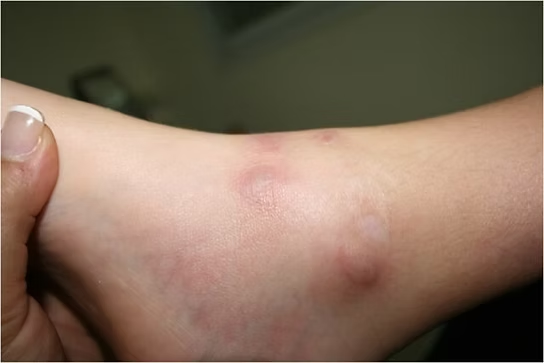Constipation
- Fysiobasen

- Dec 15
- 4 min read
Chronic constipation means infrequent or difficult bowel movements lasting for several weeks or more¹. The condition is caused either by slow transit of stool through the colon or by difficulty with evacuation in the rectum or anal canal.

Prevalence and Causes
In North America, the prevalence of chronic constipation is estimated to range from 2% to 27%, depending on diagnostic criteria². Constipation is described as reduced or disturbed movement of stool through the colon and rectum—most often, passage through the upper gastrointestinal tract is normal, but the intestine is sluggish. Delayed transit may be idiopathic (without known cause) or due to underlying disease.
Secondary causes include:
Neurological diseases (peripheral): Diabetes, Hirschsprung’s disease
Neurological diseases (central): Multiple sclerosis, Parkinson’s disease, spinal cord injury
Other conditions: Anorexia, pregnancy, pelvic floor dysfunction (dyssynergia), irritable bowel syndrome (IBS)
Medication side effects
Clinical Anatomy
The pelvic floor muscles are essential for normal bowel emptying. Lack of coordination or weakness in this area can cause constipation and difficulty with defecation.
Clinical Presentation and Diagnostic Criteria
According to the Rome IV criteria for functional constipation, the patient must have at least two of the following:
Straining in more than 25% of bowel movements
Hard or lumpy stools (Bristol type 1–2) in more than 25% of bowel movements
Sensation of incomplete evacuation in more than 25% of bowel movements
Sensation of blockage/obstruction in the rectum in more than 25% of bowel movements
Manual maneuvers to facilitate evacuation in more than 25% (e.g., digital evacuation, pelvic floor support)
Fewer than three spontaneous bowel movements per week
Loose stools are rarely seen without the use of laxatives. Functional constipation does not meet the same criteria as IBS. Although patients may experience abdominal pain or bloating, these are not dominant symptoms¹¹.
Constipation can reduce cognitive function, mobility, and participation in daily life, particularly in older women¹².
Treatment and Interventions
Diet:

Fiber is the single most important recommendation for most patients. Fiber exists in soluble and insoluble forms. Soluble fiber (fruit, oats, legumes, psyllium, pectin, wheat dextrin) dissolves in water and increases stool volume. Insoluble fiber (grains, rye) adds bulk and promotes transit. A daily intake of 20–35 grams of fiber is recommended¹³, and gradual increase reduces the risk of bloating and gas.
Physiotherapy
The physiotherapist may use a “fiber diary” to monitor intake. In cases of pelvic floor dysfunction, biofeedback can be useful. The patient learns to coordinate relaxation of the puborectalis and external sphincter, which improves evacuation. Normal defecation requires coordination between muscle relaxation and increased abdominal pressure—this can be trained with EMG and tailored guidance⁷⁸⁹¹⁵.
Medical Treatment
Bulk-forming laxatives: Psyllium (Metamucil), methylcellulose (Citrucel), calcium polycarbophil (FiberCon), wheat dextrin (Benefiber)
Osmotic agents: Polyethylene glycol (PEG), synthetic disaccharides, saline agents
Stimulant laxatives: Bisacodyl (Dulcolax), senna (Senokot), sodium picosulfate (Dulcolax drops)
Suppositories or manual evacuation may be considered in severe constipation
There is no clear evidence that long-term use of stimulant laxatives causes permanent bowel problems.
Patient Education
Emphasize that daily bowel movements are not necessary
Increase fiber and fluid intake
Attempt defecation after meals (especially in the morning when bowel activity is highest)
References
Mayo Clinic. (n.d.). Constipation. Available from: https://www.mayoclinic.org/diseases-conditions/constipation/symptoms-causes/syc-20354253
Suares, N. C., & Ford, A. C. (2011). Prevalence of, and risk factors for, chronic idiopathic constipation: Systematic review and meta-analysis. The American Journal of Gastroenterology, 106(9), 1582.
He, C. L. et al. (2001). Loss of interstitial cells of Cajal and inhibitory innervation in insulin-dependent diabetes. Gastroenterology, 121(2), 427–434.
Edery, P. et al. (1994). Mutations of the RET proto-oncogene in Hirschsprung’s disease. Nature, 367(6461), 378.
Hinds, J. P., & Wald, A. (1989). Colonic and anorectal dysfunction associated with multiple sclerosis. American Journal of Gastroenterology, 84(6).
Zipfel, S. et al. (2006). Gastrointestinal disturbances in eating disorders: Clinical and neurobiological aspects. Autonomic Neuroscience, 129(1–2), 99–106.
Rao, S. S. et al. (2010). Long-term efficacy of biofeedback therapy for dyssynergic defecation: Randomized controlled trial. The American Journal of Gastroenterology, 105(4), 890.
Chiarioni, G. et al. (2006). Biofeedback is superior to laxatives for normal transit constipation due to pelvic floor dyssynergia. Gastroenterology, 130(3), 657–664.
Rao, S. S. et al. (2018). Home-based versus office-based biofeedback for constipation: A randomised trial. The Lancet Gastroenterology & Hepatology, 3(11), 768–777.
Longstreth, G. F. et al. (2006). Functional bowel disorders. Gastroenterology, 130(5), 1480–1491.
Dantas, A. A. et al. (2020). Is constipation associated with worse functioning in adult women? Journal of Multidisciplinary Healthcare, 13, 883.
NIH. (n.d.). High-fibre foods. Available from: https://medlineplus.gov/ency/patientinstructions/000193.htm
Suares, N. C., & Ford, A. C. (2011). Effects of fibre in chronic constipation: Systematic review. Alimentary Pharmacology & Therapeutics, 33(8), 895–901.
Rao, S. S. et al. (2007). RCT of biofeedback, sham, and standard therapy for dyssynergic defecation. Clinical Gastroenterology and Hepatology, 5(3), 331–338.
Ramkumar, D., & Rao, S. S. (2005). Efficacy and safety of traditional therapies for chronic constipation. The American Journal of Gastroenterology, 100(4), 936.
DiPalma, J. A. et al. (2007). PEG laxative for chronic constipation: Placebo-controlled RCT. The American Journal of Gastroenterology, 102(7), 1436.
Dupont, C. et al. (2014). Magnesium sulfate-rich mineral water in functional constipation. Clinical Gastroenterology and Hepatology, 12(8), 1280–1287.
Kamm, M. A. et al. (2011). Oral bisacodyl in chronic constipation: Effective and well-tolerated. Clinical Gastroenterology and Hepatology, 9(7), 577–583.
Müller-Lissner, S. A. et al. (2005). Myths and misconceptions about chronic constipation. The American Journal of Gastroenterology, 100(1), 232.









